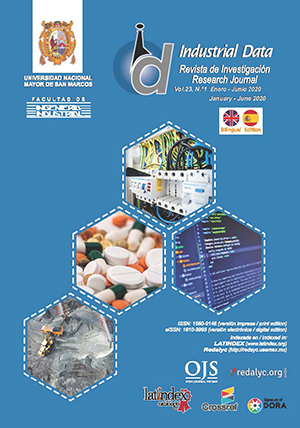Use of the K-map Method in Supply Chain Management to Promote Growth at the Points of Sale of Retail Footwear Businesses
DOI:
https://doi.org/10.15381/idata.v23i1.17521Keywords:
retail, logistics, K-map, KPIs, storeAbstract
This article offers a study of a retail footwear chain in Lima that uses the K-map method in its operations management. Its objectives are to verify if there is a positive impact on growth at the company’s points of sale, and to establish a relationship between the posed variables, considering the benefits of using the K-map method. The purpose of this study is to determine if this model promotes an increase in retail sales and if it is possible to recommend its use based upon hypotheses testing. This paper analyzes key performance indicators (KPIs) collected from six megastores to conduct normality, homogeneity, Pearson correlation and logistic regression testing. Results predict the relationship between variables and their influence on store growth with an efficacy of 83.3%.
Downloads
Downloads
Published
Issue
Section
License
Copyright (c) 2020 Rosemary Asorza Nicho

This work is licensed under a Creative Commons Attribution-NonCommercial-ShareAlike 4.0 International License.
AUTHORS RETAIN THEIR RIGHTS:
a. Authors retain their trade mark rights and patent, and also on any process or procedure described in the article.
b. Authors retain their right to share, copy, distribute, perform and publicly communicate their article (eg, to place their article in an institutional repository or publish it in a book), with an acknowledgment of its initial publication in the INDUSTRIAL DATA.
c. Authors retain theirs right to make a subsequent publication of their work, to use the article or any part thereof (eg a compilation of his papers, lecture notes, thesis, or a book), always indicating the source of publication (the originator of the work, journal, volume, number and date).






